ملخص
تستخدم بطاريات الليثيوم الآن في العديد من المجالات, وفي الماضي, بطاريات الرصاص الحمضية, بطاريات الكادميوم, وتم استخدام بطاريات النيكل في هذه المجالات. ستقدم هذه المقالة تاريخ تطور بطاريات الليثيوم أيون والمعرفة ذات الصلة بهيكل بطارية الليثيوم أيون, تستهدف القراء المهتمين أو الذين لديهم احتياجات شراء لبطاريات الليثيوم أيون, لمساعدتهم على اتخاذ خيارات أكثر حكمة عند شراء البطاريات.
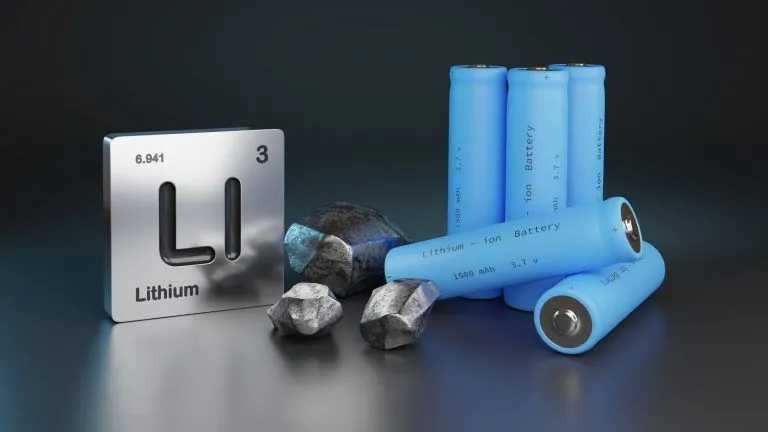
1. تاريخ تطور بطاريات الليثيوم أيون
في العقد الماضي, أصبحت بطاريات الليثيوم أيون المادة الكيميائية السائدة في البطاريات القابلة لإعادة الشحن في جميع الصناعات تقريبًا. مقارنة بالمواد الكيميائية المشهورة سابقًا (بطاريات الرصاص الحمضية, بطاريات النيكل والكادميوم, والبطاريات القلوية), تتفوق بطاريات الليثيوم أيون في العديد من الجوانب. يعتبر الليثيوم حاليًا المادة الكيميائية ذات أعلى كثافة طاقة مستخدمة, ومع بعض الوظائف الإضافية, يمكن أن تصبح المادة الكيميائية الأكثر أمانًا. طاقة الليثيوم هي مجال بحث نشط, ولذلك يتم تطوير مواد كيميائية جديدة كل عام.
تم اقتراح مفهوم بطاريات الليثيوم أيون لأول مرة في السبعينيات, عندما اخترع الكيميائي البريطاني ستانلي ويتنجهام بطارية يمكنها شحن نفسها بمرور الوقت. حاول استخدام ثاني كبريتيد التيتانيوم ومعدن الليثيوم كأقطاب كهربائية, ولكن هذا تسبب في ماس كهربائي للبطارية وانفجارها.
دفعت قضايا السلامة المتعلقة ببطاريات الليثيوم المعدنية إلى تطوير بطاريات الليثيوم أيون. على الرغم من أن بطاريات الليثيوم المعدنية لديها كثافة طاقة أعلى, تعتبر بطاريات الليثيوم أيون آمنة جدًا عند الشحن والتفريغ وفقًا لإرشادات السلامة المحددة.
في الثمانينات, أجرى جون جوديناف وأكيرا يوشينو تجارب أخرى لجعل البطاريات أكثر أمانًا. وهكذا بدأ تطوير بطاريات الليثيوم أيون.
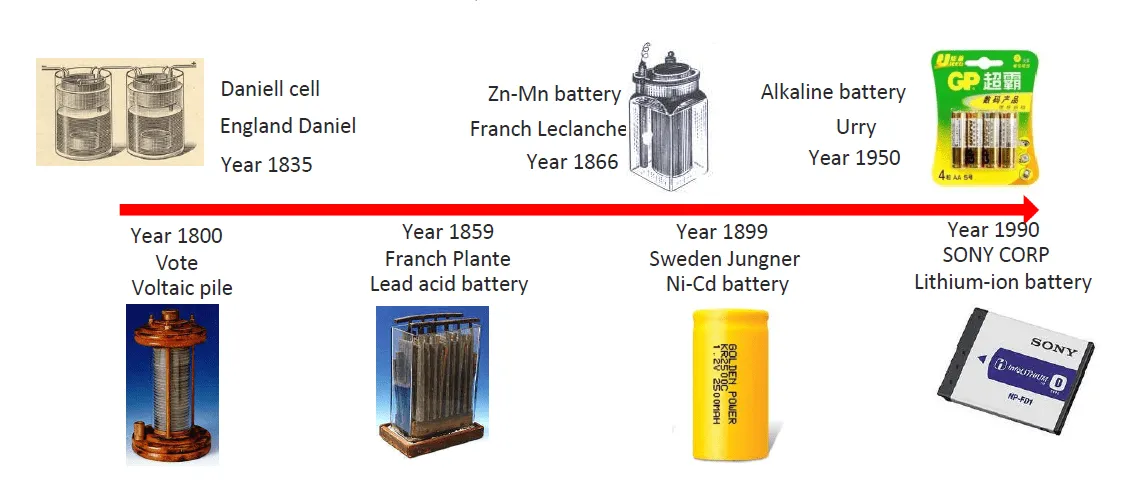
في التسعينيات, بدأت تقنية الليثيوم أيون في التفضيل وانتشرت بسرعة. في ذلك الوقت, أنتجت شركة سوني الدفعة الأولى من البطاريات التجارية, بمناسبة بداية تسويق بطاريات الليثيوم أيون. في نفس الوقت, ينمو سوق الأجهزة الإلكترونية المحمولة بسرعة, تتطلب بطارية خفيفة الوزن قابلة لإعادة الشحن لتشغيلها. بطاريات ليثيوم أيون, باعتبارها بطارية آمنة وقوية, أصبحت الخيار الأفضل.
في العقد الماضي, أصبحت بطاريات الليثيوم أيون المادة الكيميائية السائدة في البطاريات القابلة لإعادة الشحن في جميع الصناعات تقريبًا. مقارنة بالمواد الكيميائية المشهورة سابقًا (بطاريات الرصاص الحمضية, بطاريات النيكل والكادميوم, والبطاريات القلوية), تتفوق بطاريات الليثيوم أيون في العديد من الجوانب. يعتبر الليثيوم حاليًا المادة الكيميائية ذات أعلى كثافة طاقة مستخدمة, ومع بعض الوظائف الإضافية, يمكن أن تصبح المادة الكيميائية الأكثر أمانًا. طاقة الليثيوم هي مجال بحث نشط, ولذلك يتم تطوير مواد كيميائية جديدة كل عام.
حالياً, ال أفضل خمس شركات عالمية لتطبيقات بطاريات الليثيوم أيون نكون:
كاتل (الصين)
إل جي كيم (كوريا الجنوبية)
بي واي دي (الصين)
باناسونيك (اليابان)
سامسونج إس دي آي (كوريا الجنوبية)
2. هيكل بطارية ليثيوم أيون
2.1 ما هو بطارية ليثيوم أيون
ببساطة, أ بطارية ليثيوم أيون يشير إلى بطارية ذات قطب سلبي (الأنود) وقطب إيجابي (الكاثود), حيث تنتقل أيونات الليثيوم بين المادتين. مبدأ عمل بطاريات الليثيوم أيون هو نفس مبدأ عمل أي بطارية أخرى قابلة لإعادة الشحن.
أثناء التفريغ, تنتقل أيونات الليثيوم من القطب الموجب إلى الكاثود وتترسب (تضمين) في القطب الموجب المكون من الليثيوم ومعادن أخرى. عند الشحن, هذه العملية هي عكس ذلك.
تحتوي كل بطارية ليثيوم أيون على نطاق جهد يمكن أن يعمل بأمان. يعتمد النطاق على التركيب الكيميائي للإلكتروليت المستخدم في البطارية. على سبيل المثال, بطاريات LFP هي 2.5 فولت 0% حالة الشحن (شركة نفط الجنوب) و 3.6 فولت عند 100% شركة نفط الجنوب. يعتبر هذا عادةً نطاق التشغيل الآمن لبطاريات LFP, بينما يعتبر أقل من النطاق المحدد تفريغًا مفرطًا, وتجاوز المحدد 100% يعتبر SOC الشحن الزائد.
2.2 هيكل بطارية ليثيوم أيون
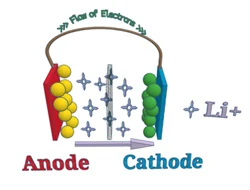
2.2.1 الأنود
الأنود هو القطب السالب في البطارية. في بطاريات الليثيوم أيون, يتكون الأنود عادة من الليثيوم والكربون (عادة مسحوق الجرافيت). النقاء, حجم الجسيمات, والتوزيع الموحد لمواد الأنود يمكن أن يؤثر جميعها على قدرتها ومعدل تقادمها.
2.2.2 الكاثود
الكاثود هو القطب الموجب. هذا هو المكان الذي تلعب فيه المواد الكيميائية المختلفة. يحدد الكاثود الخواص الكيميائية الشاملة لطاقة الليثيوم. مثل الأنود, يتم دمج المجمع مع المادة لتسهيل نشاط التفاعل الإلكتروني. يكمن الاختلاف الرئيسي بينهما في درجة الحرارة التي تتفاعل فيها المواد الكيميائية المختلفة مع الإلكتروليتات (هارب حراري) وحجم الجهد الذي تنتجه.
2.2.3 الشوارد
تسمح الإلكتروليتات لأيونات الليثيوم بالانتقال والتنقل بين اللوحين. عادة, فهو مكون من كربونات عضوية مختلفة, مثل كربونات الإيثيلين وكربونات ثنائي الإيثيل. تعتمد المخاليط والنسب المختلفة على بيئة تطبيق البطارية.
على سبيل المثال, لتطبيقات درجات الحرارة المنخفضة, ستكون لزوجة محلول الإلكتروليت أقل من لزوجة محلول الإلكتروليت في درجة حرارة الغرفة. في بطاريات الليثيوم, سداسي فلوروفوسفات الليثيوم (LiPF6) هو ملح الليثيوم الأكثر شيوعا. يمكن القول أن المنحل بالكهرباء الأكثر استخدامًا على نطاق واسع في بطاريات الليثيوم أيون هو سداسي فلوروفوسفات الليثيوم (LiPF6), التي تحدد جودتها أداء الشحن والتفريغ, خدمة الحياة, وسلامة بطاريات الليثيوم أيون.

لأن LiPF6 يتمتع بأفضل أداء شامل بشكل عام, لديها صداقة بيئية ممتازة, تخميل مجمع تيار القطب الموجب لمنع تآكل القطب, وعندما يمتزج بالماء, وينتج حمض الهيدروفلوريك (التردد العالي), مما يساعد على تكوين فيلم SEI على القطب السالب.
SEI هو تفاعل كيميائي بين معدن الليثيوم والكهارل, والتي تشكل طبقة إلكتروليت صلبة على سطح معدن الليثيوم. يلعب دورًا في العزل والحماية بين معدن الليثيوم والكهارل.
في ظل الظروف العادية, عادةً ما يتم شحن الشركات المصنعة للبطاريات ببطء لتكوين SEI موحد على أنود الكربون.
2.2.4 غشاء

فاصل بطاريات الليثيوم أيون عبارة عن فيلم بلاستيكي مسامي يسهل منع الاتصال المباشر بين الأنود والكاثود. عادة ما تكون هذه الأغشية الرقيقة 20 ميكرون سميكة ذات مسام صغيرة تسمح بمرور أيونات الليثيوم أثناء عمليات الشحن والتفريغ. بمجرد أن تتجاوز البطارية نطاق درجة الحرارة أو تتعرض لدائرة كهربائية قصيرة, سيغلق هذا الفاصل المسام ويمنع مرور أيونات الليثيوم, وبالتالي إيقاف التفاعل الكيميائي.
3. مزايا بطاريات الليثيوم أيون
3.1 مزايا هيكل بطارية ليثيوم أيون
1. ارتفاع معدل التفريغ, قدرة مستقرة
2.شحن سريع
بطاريات ليثيوم أيون – مشحونة من الداخل 1 ساعة
بطاريات الرصاص الحمضية – انتهى 9 ساعات
3.بصمة صغيرة وقدرة تحمل قوية
4.دورات متعددة وعمر خدمة طويل
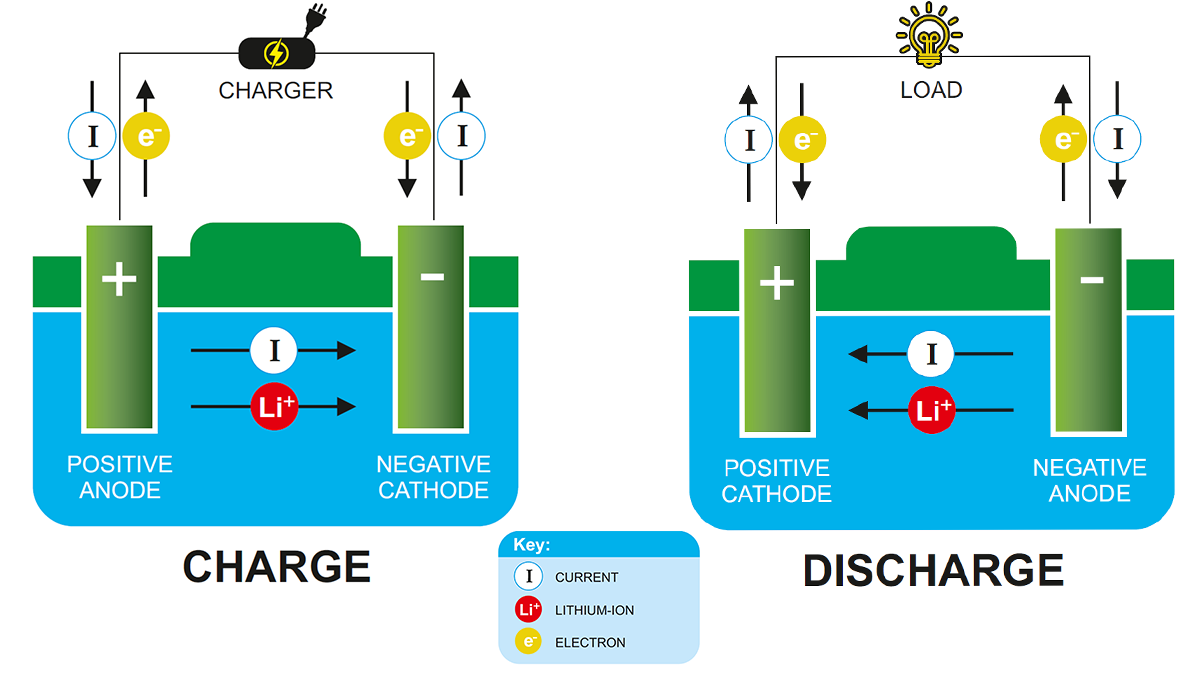
بطاريات الليثيوم أيون – دورة الحياة عادة 5000 مرات, والتفريغ الكامل لا يؤثر على عمر الدورة
بطاريات الرصاص الحمضية -300 ل 500 مرات, سيؤثر التفريغ الكامل على عمرهم
5.كفاءة عالية في استخدام الطاقة
بطاريات ليثيوم أيون -96% الإخراج, 4% فقدان الحرارة
بطاريات الرصاص الحمضية -15% فقدان الحرارة عند 85% الإخراج
6.مجموعة واسعة من جهد الشحن
لا حاجة لتعويض الجهد
7.تقليل تكاليف الإدارة الحرارية
بطاريات ليثيوم أيون - دوران هواء مقبول
بطارية حمض الرصاص – تتطلب تكييف الهواء
8.لا توجد انبعاثات غازية
بطاريات الليثيوم أيون – تعمل في حاويات محكمة الغلق
بطاريات الرصاص الحمضية – تتطلب تهوية بالهيدروجين
9.غير سامة, لا توجد قيود على إعادة التدوير
الطاقة الخضراء الجديدة, آمنة ومأمونة للاستخدام.
لمزيد من المقارنة بين بطارية الليثيوم وبطارية حمض الرصاص, انقر للعرض: بطارية الليثيوم مقابل. بطارية الرصاص الحمضية للحصول على محتوى أكثر تفصيلاً وتحديدًا.
3.2 سبب اختيار استبدال بطاريات الرصاص الحمضية ببطاريات الليثيوم أيون
3.2.1 تحسين الكفاءة
بفضل التقدم في نظام إدارة المباني (BMS) وتكنولوجيا الشحن, يمكن أن تساعد معدات إمداد الطاقة ببطارية ليثيوم أيون في تحسين الكفاءة وتقليل وقت التوقف عن العمل الناتج عن الحاجة إلى شحن المعدات التي تعمل بالبطارية.
3.2.2 تحسين الإنتاجية
لا داعي للقلق بشأن مشكلات شحن الجهاز, وتسمح تكنولوجيا بطاريات الليثيوم أيون للشركات بالاستثمار في حلول الأتمتة, خفض التكاليف للشركات.
3.2.3 طريقة أسهل للشحن والتخزين
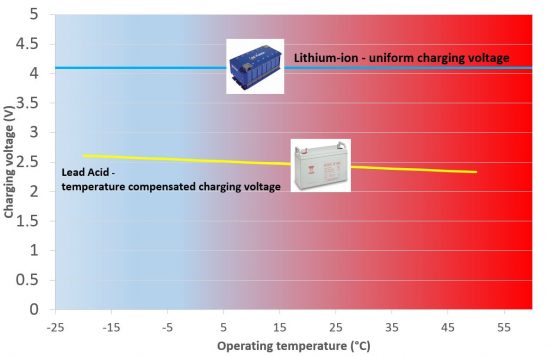
يمكن شحن بطاريات الليثيوم أيون في أي وقت, مما يعني أنه يمكنك شحنها حسب راحتك. لا تتطلب بطاريات الليثيوم أيون أيضًا مساحة شحن أو تخزين خاصة بها, لأنها لا تشكل مخاطر بيئية مثل بطاريات الرصاص الحمضية.
3.2.4 لا حاجة للصيانة
على عكس بطاريات الرصاص الحمضية, لا تتطلب بطاريات الليثيوم أيون عمليات فحص وطرق صيانة مملة.
3.2.5 تحسين السلامة التشغيلية
تعمل بطاريات الليثيوم أيون على تحسين السلامة التشغيلية للمنشآت من خلال وسائل مختلفة, كما أنها أكثر صداقة للبيئة نظرًا لانخفاض خطر ارتفاع درجة الحرارة, انفجار, أو انبعاث غازات أو سوائل ضارة.
4.1 شحن متوازن
قم بشحن البطارية بشكل زائد بعد دورة شحن كاملة أعلى من الجهد العادي. هذه الخطوة ضرورية للمساعدة في إزالة الكبريتات المتراكمة وموازنة جهد كل بطارية في بطاريات الرصاص الحمضية.
4.2 تدهور البطارية
عملية تقليل كمية الطاقة التي يمكن للبطارية تخزينها. درجة حرارة, شحن وتفريغ الجهد, ويمكن أن يؤثر عمق الشحن والتفريغ على درجة انخفاض سعة البطارية بمرور الوقت.
4.3 عدد دورات البطارية
إذا أكملت البطارية عملية شحن واحدة وتفريغها كدورة, العدد التراكمي للشحنات والتصريفات. تتكون دورة البطارية من 100% التفريغ والشحن.
4.4 عمر البطارية
كم من الوقت يمكن استخدام البطارية خلال عمرها الافتراضي؟. يتم قياس العمر الافتراضي بعدد الدورات الكاملة للشحن والتفريغ.
4.5 درجة حرارة العمل
درجة الحرارة المقبولة للبيئة المحيطة التي تعمل فيها البطارية. إذا تجاوزت درجة حرارة العمل النطاق, قد تفشل البطارية.
4.6 قائمة/شهادة UL
تعني قائمة/شهادة UL أن UL قامت بتقييم عينات المنتجات للتأكد من أنها تلبي متطلبات محددة. يتضمن ذلك عينات اختبار تغطي حالات السلامة الوظيفية والاستخدام لهيكل بطارية أيون الليثيوم.
5. لماذا تختار أيونات الليثيوم- التحليل من منظور هيكل بطارية ليثيوم أيون
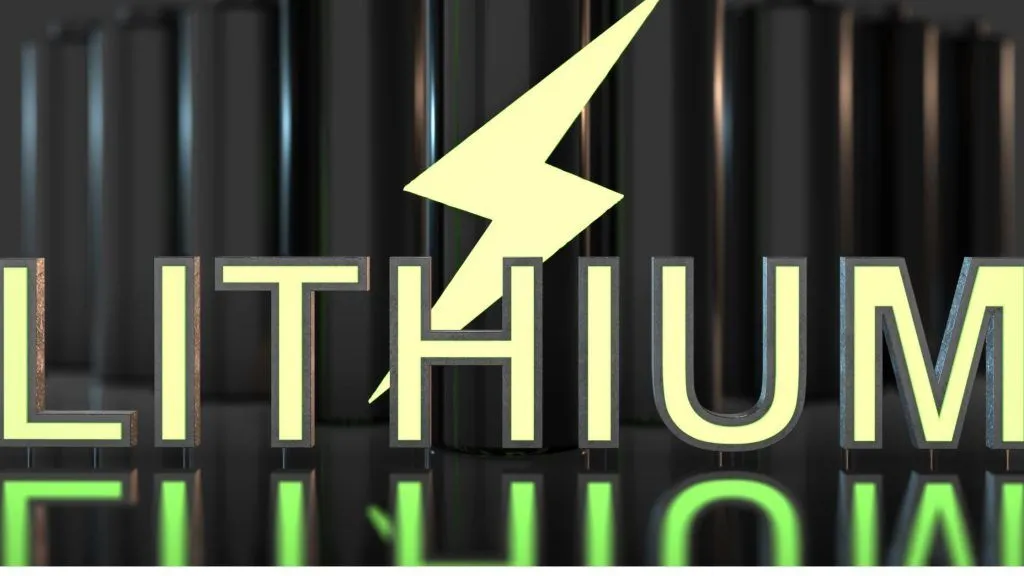
5.1 نوعية ممتازة
تعد كثافة الطاقة العالية ودورات التفريغ الواسعة لبطاريات الليثيوم أيون من أهم العوامل, مما يجعلها لا غنى عنها في العديد من الأجهزة. كما أنها تتفوق على كيمياء البطاريات التقليدية في العديد من الجوانب الأخرى. بالإضافة إلى كثافة الطاقة العالية للبطاريات, يمكنهم أيضًا التفريغ بقوة عالية والشحن بسرعة. وهذا يمنحها مرونة تشغيلية أكبر من بطاريات الرصاص الحمضية.
في سيناريوهات التطبيق حيث تكون طاقة الشحن أو الوقت ضيقًا, مثل أنظمة الطاقة الشمسية الكهروضوئية, التشغيل المستمر في الحالات المشحونة جزئيًا لن يسبب ضررًا لبطاريات الليثيوم أيون.
5.2 صديق للبيئة
التفاعل بين بطاريات الليثيوم أيون والبيئة معتدل للغاية. لا تنبعث أي غازات ضارة أثناء الشحن, وفقدان الحرارة منخفض جدًا. وهذا يعني أنه يمكن استخدام بطاريات الليثيوم أيون في الأماكن المغلقة, معزولة تماما عن المناطق المحيطة بها. تعد إعادة تدوير البطاريات المهملة وإعادة استخدامها أمرًا مريحًا للغاية أيضًا, لأنها لا تحتوي على مواد سامة مثل الكادميوم, الزئبق, والرصاص.
5.3 أنواع متعددة من الهياكل
أثناء التفريغ, تتحرك الشحنة عبر الدائرة الخارجية بين أقطاب البطارية. من أجل موازنة نقل الشحنة داخل البطارية, تتحرك أيونات الليثيوم موجبة الشحنة عبر دائرة إلكتروليت داخلية بين الأقطاب الكهربائية الموجبة والسالبة. عند الشحن, يتم عكس العملية, وتعود أيونات الليثيوم من خلال المنحل بالكهرباء.
يمكن استخدام أنواع متعددة من المواد الكيميائية ككاثودات (كاثودات) لتصنيع مواد القطب الكهربائي التي تحمل أيونات الليثيوم. المواد المنحل بالكهرباء هي أيضًا اتجاه بحثي, وحالة المواد مثل المواد الصلبة والسوائل هي أيضًا موضوع بحث. هذا مجال بحث وتطوير نشط للغاية, الذي يقود تطوير بطاريات الليثيوم أيون في المزيد والمزيد من تطبيقات السوق.
خاتمة
الآن بعد أن فهمت الكثير من التحليلات والبيانات, يجب أن يكون لديك فهم معين لبطاريات الليثيوم: تاريخهم, المزايا, واتجاه التنمية.
لقد وصل مستقبل المنتجات الكهربائية. ولا يمكن تجاهل الطلب على التحول من الطاقة التقليدية إلى الطاقة الجديدة. مع إدراك المزيد والمزيد من الصناعات والمؤسسات لمزايا تكنولوجيا بطاريات الليثيوم أيون, أصبح اتخاذ القرارات لتحويل التركيز على الأعمال أسهل.
اتصل بنا, خدمة GYCX الشاملة يوفر الحل الأمثل لاحتياجاتك.
هل تخطط للاستثمار في تكنولوجيا بطاريات الليثيوم أيون الآن؟?
التعليمات
1. هل يمكن لبطاريات الليثيوم أن تحل محل البطاريات القلوية?
على الرغم من أن بطاريات الليثيوم تستخدم تكنولوجيا البطاريات الأكثر تكلفة, قدرتها على الحفاظ على الجهد العالي تعني أنها بديل ممتاز للبطاريات القلوية.
2.هل ستتسرب بطاريات الليثيوم؟?
بطاريات الليثيوم لا تتسرب, لذلك فهي آمنة جدًا للتخزين.
يمكن أن يشتعل الليثيوم عند ملامسته للهواء أو الماء. هم أقل عرضة للتسرب بسبب الشوارد السائلة, تكنولوجيا معالجة العادم ناضجة جدًا بالفعل.
3.في أي درجة حرارة تنفجر بطاريات الليثيوم أيون؟?
يمكن أن تنفجر بطاريات الليثيوم عند 538 درجة مئوية.
إذا تم تسخين بطارية الليثيوم لفترة طويلة, ربما. لأن بطاريات الليثيوم أيون لديها طاقة عالية جدًا, عندما تصبح ساخنة, يطلقون مذيبات عضوية تعمل على المنحل بالكهرباء; هذه الحرارة قد تسبب انفجارها.
يمكن أن تتسبب الدوائر القصيرة التي تحدث عندما تتلامس أطراف البطارية مع المعدن أيضًا في حدوث انفجارات.
